Should You Use Deicing Salt on Ice?
Should You Use Deicing Salt on Ice?
Winter weather can be dangerous, slippery, and tricky. As the temperatures drop and snow or ice falls, roads and sidewalks become hazardous to navigate. To keep people safe while traveling, deicing salt is used on surfaces to make them less slippery. What is deicing salt? Should you use deicing chemicals? What are its benefits for winter weather conditions, and what are some more environmentally safe alternatives? Let’s take a look!
What is Deicing Salt?
Deicing salt, also called rock salt or road salt, is a type of halite (salt) used to remove ice and snow from sidewalks, roads, and other surfaces. It works by lowering the freezing point of water so that when it comes in contact with an icy surface, it will melt the ice without requiring much energy. This means that even at lower temperatures – below 0°C or 32°F – salt can still be effective in melting snow and ice.
The most common type of deicing salt is sodium chloride (NaCl). However, there are other salts like calcium chloride (CaCl2) and magnesium chloride (MgCl2) which are also popular choices due to their lower cost when compared to traditional sodium chloride products. These alternatives are also more effective at low temperatures than regular rock salt.
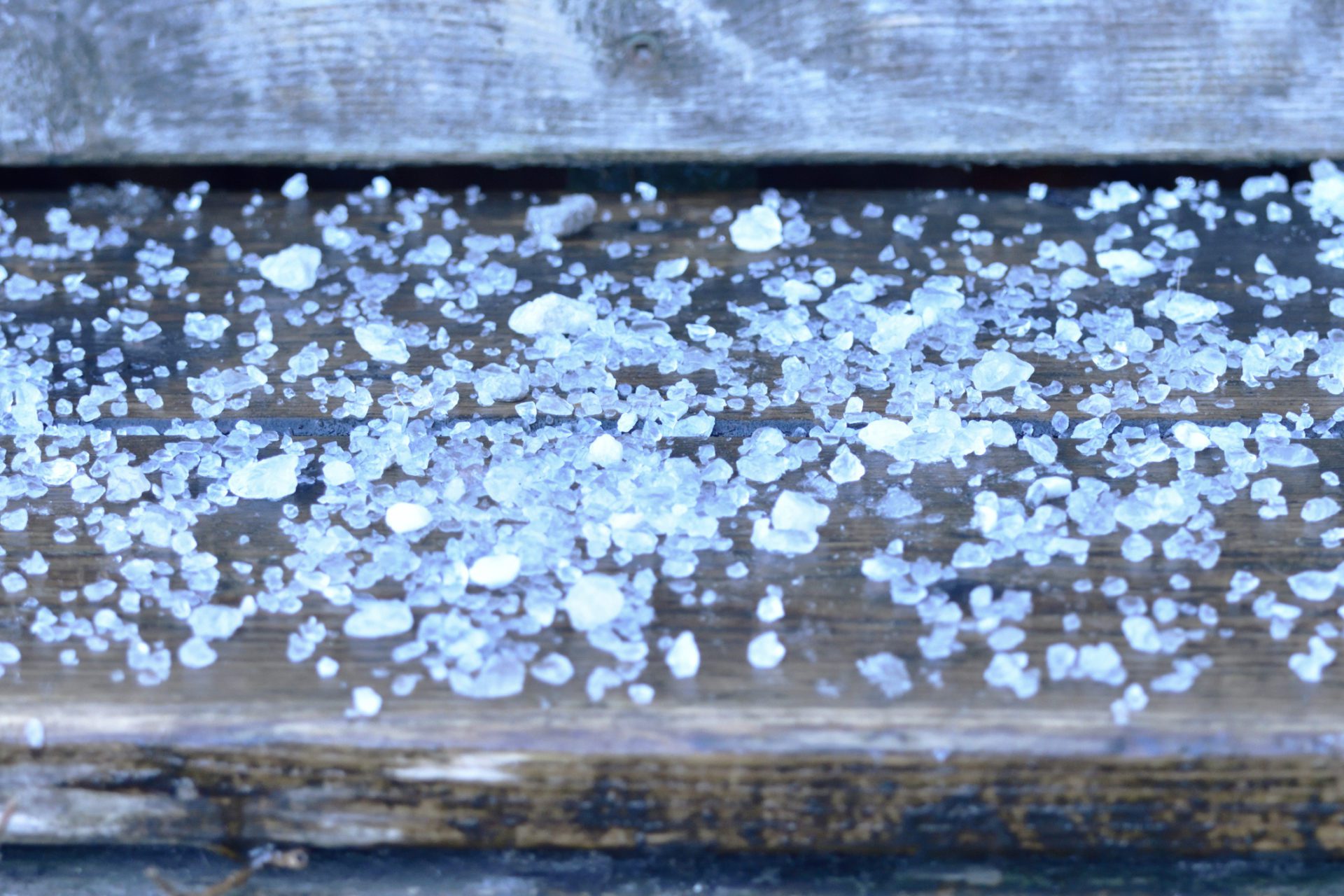
What are the benefits of deicing salt?
What Are the Benefits of Deicing Salt?
One of the main advantages of using deicing salt is that it helps make surfaces less slippery for people walking or driving on them. As you know, the presence of snow or ice on sidewalks can make them incredibly slick, rendering them difficult to walk without slipping and falling thus increasing the chances of injury. However, when deicing salt is applied to a surface before the snow or ice has had time to accumulate, it can significantly reduce its slipperiness. Additionally, because deicing salt melts ice quickly and efficiently, there’s no need to wait long periods of time for surfaces to clear before they’re safe again to traverse on foot or by car.
Another benefit of using deicing salt is that it prevents snow or ice from accumulating on surfaces in the first place. This means you don’t have to worry about constantly shoveling your driveway or sidewalk every time it snows – all you need to do is sprinkle some deicing salt over your driveway before the snow starts falling so it doesn’t start to accumulate.
How Does Deicing Salt Work?
When deicing salt is mixed with water, it produces a brine solution that has a lower freezing point than water alone. This brine solution helps prevent snow and ice from forming on surfaces since the temperature has been adjusted so that the water does not freeze. Additionally, deicers work to break down existing snow and ice by melting them into slush or liquid form making them easier to remove from roads or sidewalks with a shovel or plow.
Environmental Impact of Deicing Salt
While deicing salt helps to keep roads and sidewalks free from ice and snow, it can have a negative impact on both the environment and our health. In this article, we also take a look at the various environmental impacts of salt damage during winter weather conditions.
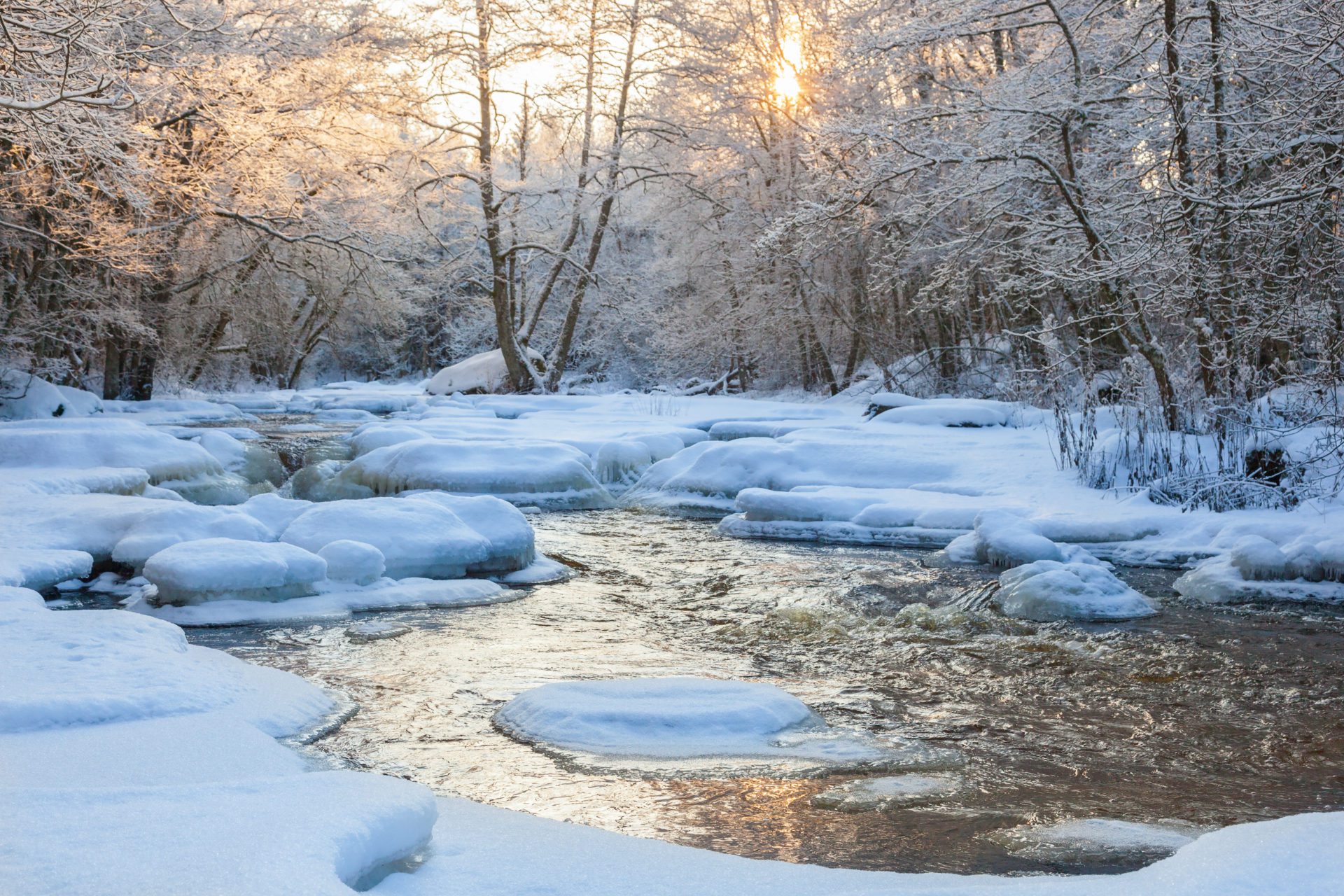
Deicing salt can cause pollution of water sources
Pollution of Water Sources
For example, one of the most significant environmental impacts of using deicing road salt is its effect on nearby water sources. When salt is used to melt ice and snow, it is washed away by rain, salt spray, or melted snow runoff. Eventually, these things find their way into nearby rivers, lakes or streams.
Having this runoff can lead to increased levels of salinity in bodies of clean water, which can be harmful to fish and plants. Additionally, high levels of salinity can ruin water quality and make these sources unsuitable for drinking or other activities such as fishing or swimming.
Erosion of Soil
Surprisingly, another major environmental concern associated with deicing salt is soil erosion. As the salt enters the soil around roadways or sidewalks, it can act as a corrosive agent that breaks down the soil particles over time. This can lead to an increase in dust particles in nearby areas as well as an overall decrease in soil fertility, which can kill plants. In extreme cases, this erosion may even corrode metals and cause sinkholes or other structural damage due to weakened soils beneath roadways or sidewalks.
Air Pollution
Finally, when deicing salts are used, they create air pollution in two ways: from their production process and from their use on roads and sidewalks. From a production standpoint, many salts contain pollutants such as sulfur dioxide which are released into the atmosphere during manufacturing processes. Once deicing salts are applied to roads and sidewalks they then create dust particles.
These dust particles are created when vehicles drive over them or pedestrians walk over and initiate corrosion as they are released into the air. Pollutants, such as nitrogen oxides, may linger in the atmosphere for long periods of time before finally settling back onto land surfaces.
5 Alternatives to Deicing Salt for Winter Weather Safety
Luckily, there are some different deicers that can be used instead of deicing salt. Let’s take a look at these alternatives and how they can help keep us safe during cold weather.
1- Calcium Magnesium Acetate (CMA)
Calcium magnesium acetate (CMA) is an alternative to traditional rock salt that has been around since the 1940s. CMA works in much the same way as regular deicing salt—it lowers the freezing point of water, which helps prevent ice from forming on surfaces. However, unlike regular deicing salts, CMA does not corrode metal or damage concrete or other surfaces like asphalt. It also produces fewer emissions when compared to traditional rock salt because it doesn’t contain chlorine or sulfur compounds. For pet lovers, CMA is also a good alternative to consider as it is safer for pets. This is because it isn’t toxic or hazardous if your furry friend happens to ingest it as regular rock salt can be.
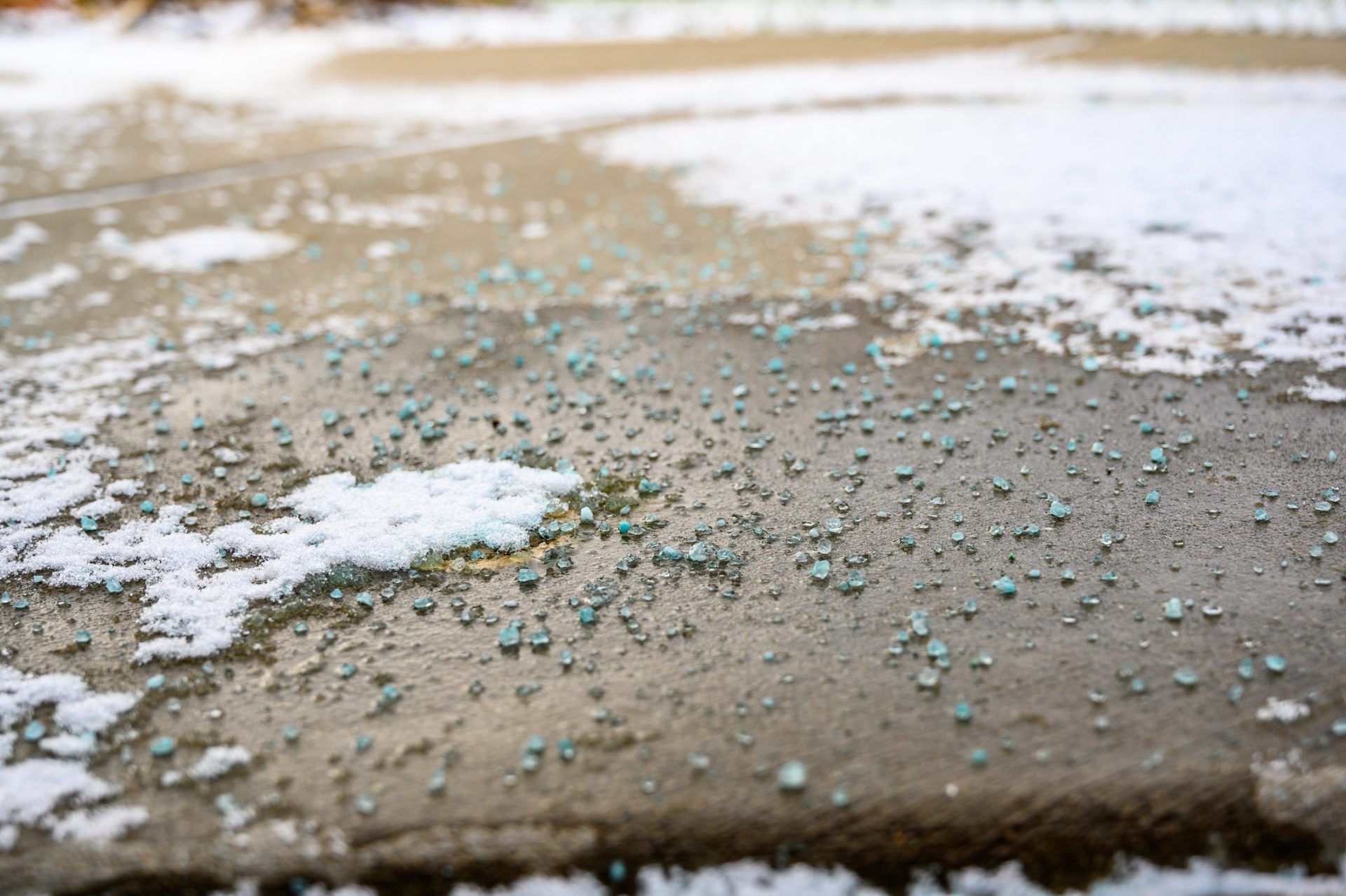
There are alternatives to traditional rock salt such as Potassium Chloride (KCl)
2- Potassium Chloride (KCl)
A second option is potassium chloride. This alternative has been used since the 1960s and, like CMA, KCl works by lowering the freezing point of water which helps prevent ice from forming on surfaces. However, it differs from CMA in that potassium chloride does contain chlorine compounds.
Like with other chlorine compounds this means more emissions are produced in the production of this alternative when compared with other alternatives like CMA and calcium chloride brine solutions (which we’ll discuss next). Still, potassium chloride is less corrosive than traditional rock salts and is generally considered to be safe for both humans and pets if ingested in small amounts.
3 – Calcium Chloride Brine Solutions
Next on our list is calcium chloride brine solutions. These are one of the most popular alternatives to traditional rock salts due to their effectiveness at melting ice and snow quickly even in extremely cold temperatures. Calcium chloride brine solutions work by lowering the freezing point of water much like other deicers, but they also absorb heat as they freeze which helps them melt faster than other products on the market today.
Additionally, calcium chloride brine solutions are less corrosive than traditional rock salts. They won’t damage vehicle paint finishes or eat away at metal parts as regular rock salts can do over time. They’re also considered safe for both humans and pets if ingested in small amounts making them a great option for anyone looking for an eco-friendly solution to their winter weather safety needs.
4 – Organic Solutions
One of the best alternatives to using deicing salt is an organic solvent such as a mixture of vinegar and water. This solution is not only safe for your pets and family members. It can also help reduce corrosion caused by other chemicals in deicing salt. How does it work best? Homeowners or business owners can apply this organic deicing solution to their walkways, pavement, concrete or other areas before snowfall or freezing temperatures arrive. However, it can also still be effective even after the snow has begun to accumulate on surfaces.
If you’re looking for more eco-friendly deicing options you can consider plant-based solutions such as corn gluten meal or ground beetroot juice powder. These solutions act much like traditional deicing salts in that they both melt away ice and snow; however, they do so without the environmental hazards associated with chemical solutions. They are also pet friendly so you can be sure to keep your dogs and cats safe!
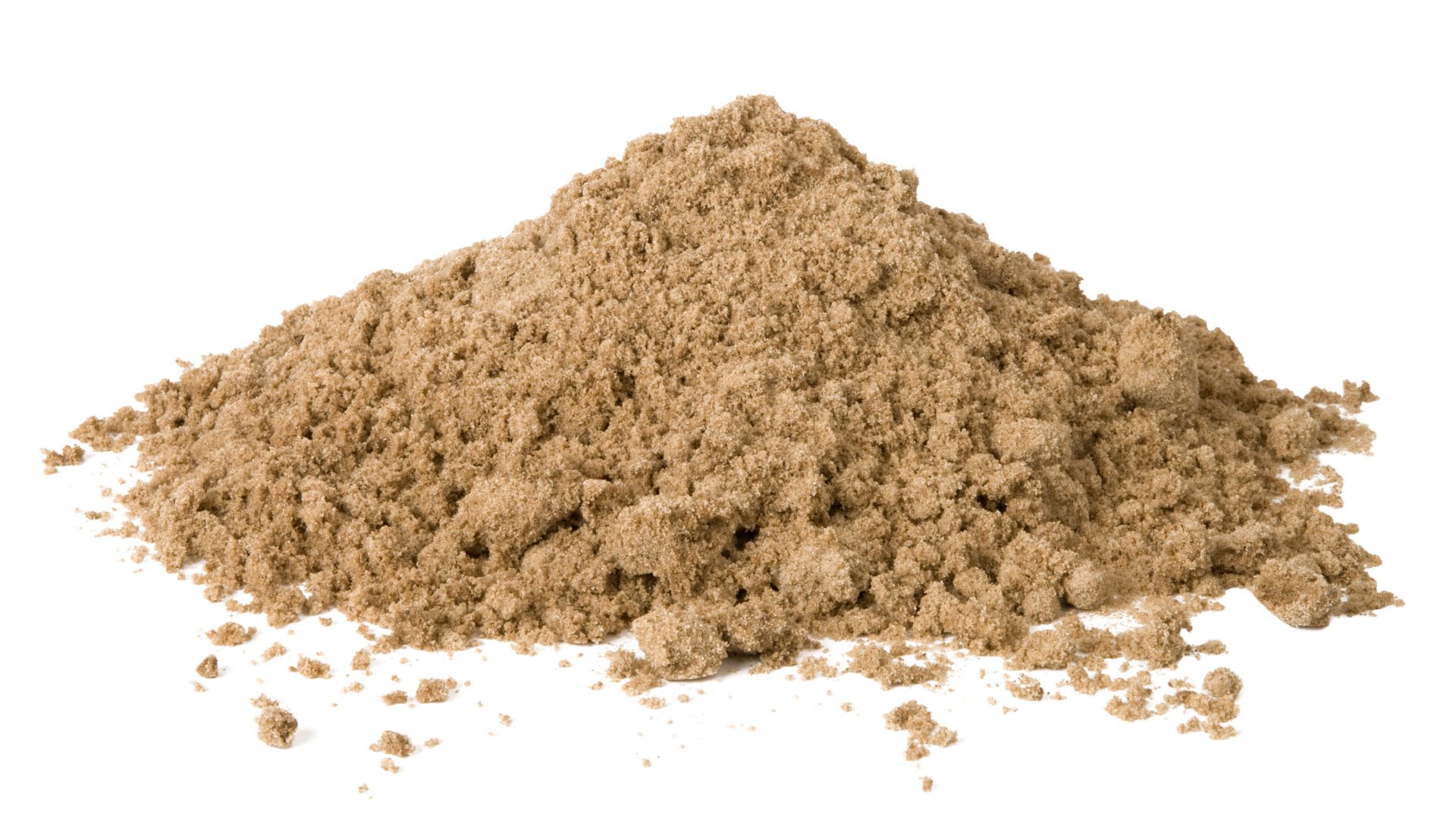
Sand is a more environmentally friendly alternative to deicing salt.
5- Sand
Finally, the last great alternative is sand. Sand adds traction on slippery surfaces without the need for chemical treatments. While sand does not actually melt ice or snow, it does make walking and driving on icy surfaces easier and safer. The downside to this method is that sand needs to be cleaned up afterward. This can be a small price to pay if you don’t want harsh chemicals near your home or pets.
There are more alternatives to deicing salts and corrosive chemicals. Be sure to do your research or ask a professional for their recommendations before putting anything down.
When Should You Use a Professional for Salting?
Unfortunately, deicing solutions are not a one-size-fits-all approach, so it is essential to understand when you may need a professional to help with deicing. Whether you’re a homeowner looking for a suitable way to de-ice your pavement while protecting your pets or a business owner looking to use deicers for your parking lots, a professional can help.
Working with a professional for deicing is the best way to ensure your property remains safe and protected during the winter months. They are not only familiar with the most effective techniques for removing ice and snow, but they can recommend different types of chemicals that work best in different temperatures and conditions. Lastly, chemical treatments can be corrosive and dangerous if not applied correctly, so it’s important the professional you work with is experienced and knows how to apply solutions safely and correctly.
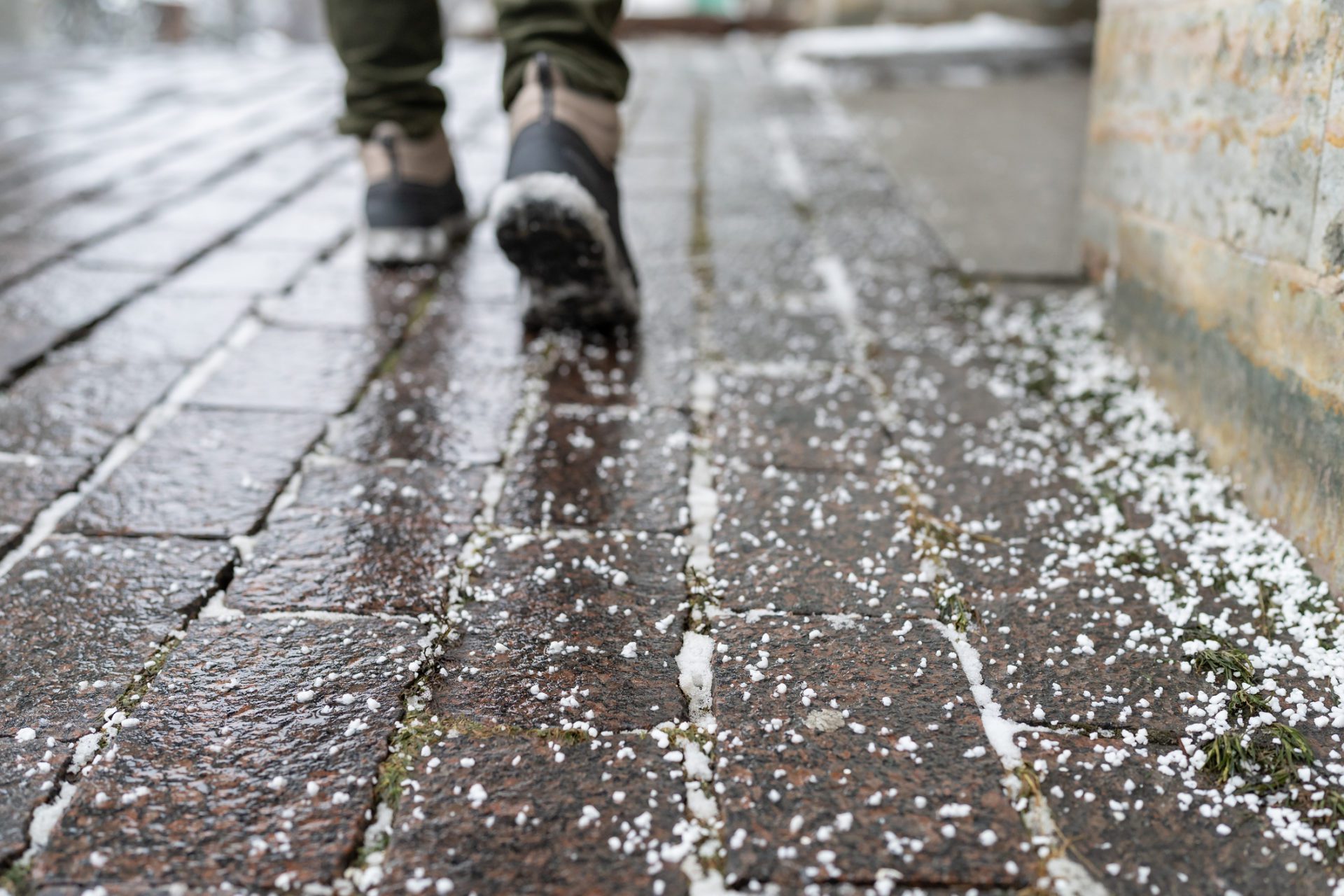
When in doubt, ask a professional for help with deicing solutions.
The Bottom Line
While salt may be one of the most common ways for deicing roads during winter weather, there are alternatives to deicing chemicals that offer even more effective results with fewer environmental impacts. When planning for winter weather conditions, consider all available options before applying harsh chemicals around your home, business, or pets. What’s more, by using a professional service provider who understands what works best in different climates and conditions, ensure your property is well taken care of during the winter season while also protecting yourself and your loved ones from potential hazards. If you have any questions or want a free deicing consultation, contact All Metro Service Companies today. We’re happy to help!
Looking for more information?
Call us today at 763-789-4788 to receive a free estimate on any of our property services.
Free Estimates
on all Services
Use the form below to request a free estimate on any of our services.






